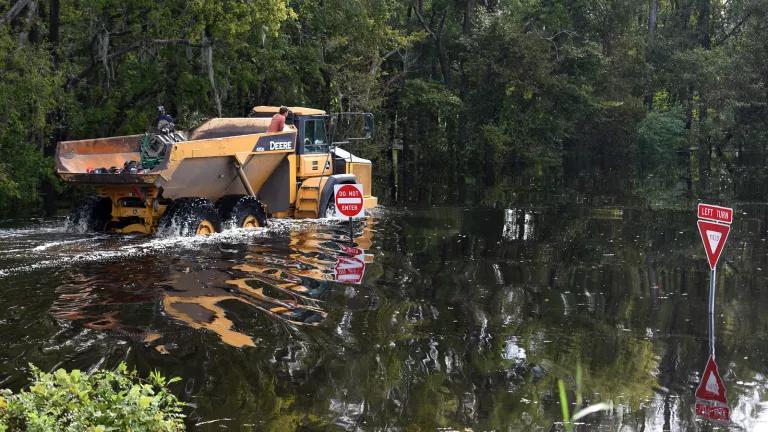
This October marks four years since Hurricane Sandy slammed into the Northeast, tragically claiming 159 lives and causing more than $60 billion dollars in damage. Sandy was the second most costly hurricane in U.S. history, with storm-surge and flooding leaving New York City and parts of New Jersey devastated. Alarmingly, flooding of this magnitude is projected to increase in frequency for New York City by the end of the century.
According to a new study published in the Proceedings of the National Academy of Sciences, the chances of a catastrophic flood event on par with Sandy tripled from once every 1200 years to once every 400 years between 1800 and 2000. Factor in ever-accelerating sea level rise exacerbated by climate change and these chances become 4.4 times more likely by the end of the century. That’s a Sandy-like flood event every 90 years.
Once every 90 years may sound negligible, but it’s not. For context, take a look at FEMA’s Flood Insurance Rate Maps. FEMA’s maps label high hazard areas as those with a chance of flooding once in one hundred years (100-year flood). But 100-year flood events are not a reliable depiction of flood probability. It’s not accurate to assume that once a flood of that magnitude strikes that the area is automatically dry for the next hundred years. Instead, the phrase means there is a one percent annual chance for a flood of that magnitude to occur. In keeping with the theme of FEMA’s flood maps, a home located in the 100-year floodplain has a 25 percent chance of flooding over the course of a thirty-year mortgage. If the study’s findings are accurate, the NYC region is in for a very turbulent future, with Sandy-like flooding becoming the new normal.
Mitigation and climate resilience must be factored into community design and planning to account for these potential impacts. NYC has already taken steps to account for a future of higher sea levels. Last year, the city proposed adopting sea level rise regulations that account for six feet of rise by the end of the century. The regulations were promulgated under the authority of the Community Risk and Resiliency Act (CCRA), which requires state agencies, like the Environmental Facilities Corporation, to ensure certain funding and permitting decisions consider the effects of climate change.
However, NYC is not alone in facing the perils of sea level rise and greater damage from hurricane-induced floods. According to a study by the Congressional Budget Office (CBO), damage from hurricanes, overall, is expected to increase significantly over the course of the next century due to the effects of climate change and coastal development. In the report, the CBO concluded that “over time, the costs associated with hurricane damage will increase more rapidly than the economy will grow.” This has the potential to increase the percentage of federal dollars spent for relief and recovery, if current post-disaster spending trends remain the same.
Like New York City, the Federal government must place greater emphasis on reducing vulnerability of communities and Federal assets. Fortunately, the Obama Administration has taken such action by issuing Executive Order 13690, which established the Federal Flood Risk Management Standard. Under the Standard, federal agencies must use more protective design standards when making decisions about what and where to build, or in deciding which projects can receive federal funding. Ensuring the implementation of this smart standard will result in stronger, more resilient communities and a more conservative investment of taxpayer dollars.
Climate change is raising sea levels, which is increasing the flood risks faced by our nation. Storm surge from hurricanes will be able to reach farther inland, threatening people and property. Failure to understand these risks, and account for them in how we design and plan our communities, is not only fiscally irresponsible, it is dangerous.




